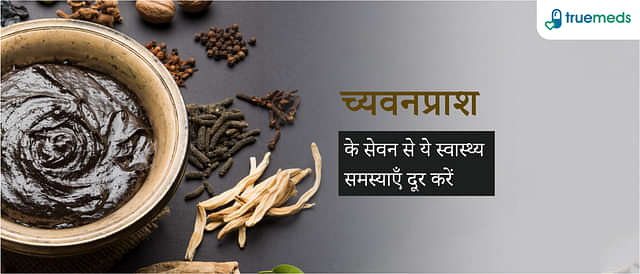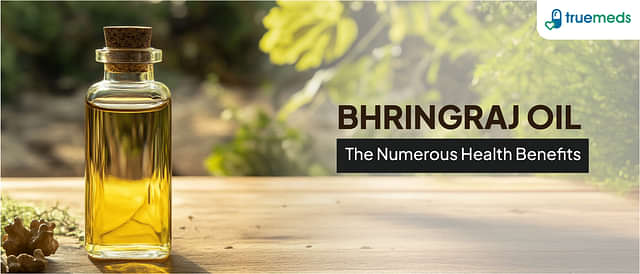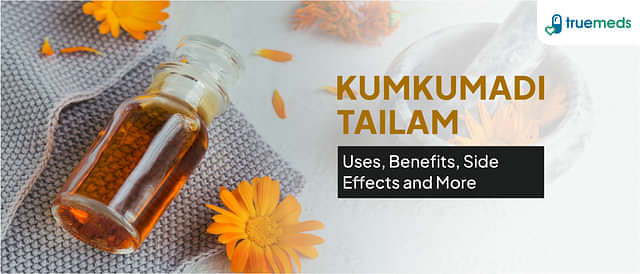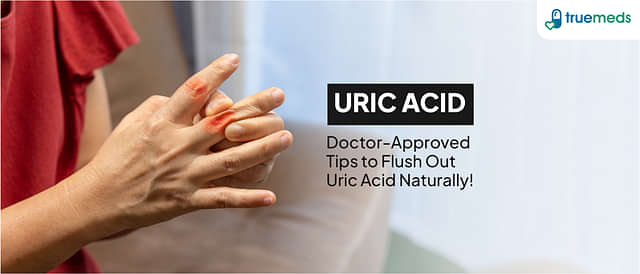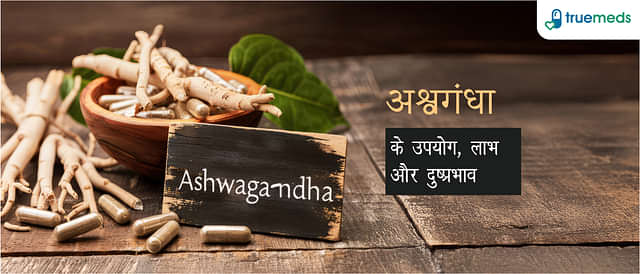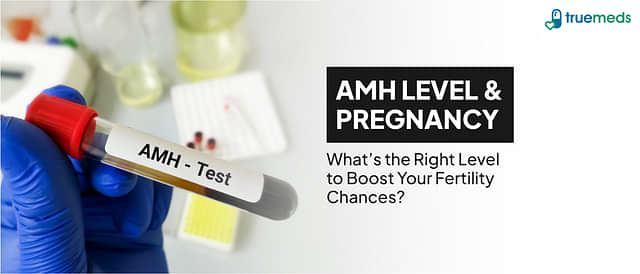Patharchatta Plant: Uses, Health Benefits, and Side Effects
Last updated on : 30 Nov, 2025
Read time : 8 min
Patharchatta (Bryophyllum pinnatum), a succulent herb widely revered in traditional medicine systems such as Ayurveda (where it is known as Pashanbheda or Ashmarihara) and folk practices across Asia, Africa, and Latin America, is known for its impressive therapeutic potential. Rich in bioactive compounds like flavonoids, tannins, and bufadienolides, this resilient plant has been traditionally used to address a range of health issues, including urinary calculi (kidney stones), inflammation, respiratory disorders, and skin conditions. Its anti-inflammatory, analgesic, antimicrobial, and diuretic properties contribute to its growing popularity as a natural remedy. While promising in traditional application, it’s important to use Patharchatta with care, as certain compounds may cause adverse effects or interact with medications, especially concerning cardiac function at high doses.
This article highlights the traditional and scientifically studied benefits, uses, and potential side effects of this versatile botanical.
Health Benefits of Patharchatta Plant
Patharchatta, also known as Kalanchoe, has a long history in traditional medicine across India for a variety of therapeutic uses. Ayurvedic texts highlight its mutra-virechana (diuretic) and ashmarihara (stone-dissolving) properties, supporting its primary traditional use [1]. Contemporary research supports some of these traditional claims, especially regarding kidney stone prevention.
1. Kidney Stone Prevention & Treatment
Several studies have demonstrated that B. pinnatum leaf extracts may significantly help reduce calcium oxalate stone formation. In a 2018 study on rats, B. pinnatum showed a 61.2% reduction in stone formation [2]. These effects include lowering urinary oxalate levels, improving renal and serum biochemical markers, increasing urine volume, and reducing stone deposition sometimes performing comparably to standard treatments like Cystone.
2. Digestive Health
Traditionally used for treating acidity, heartburn, and digestive discomfort, Patharchatta may offer mild diuretic and soothing effects on the gastrointestinal tract. The traditional application for managing Amla Pitta (hyperacidity) is still common in folk practices [3]. However, more clinical research in humans is needed to validate these benefits.
3. Immune Support via Antioxidant & Antimicrobial Effects
The plant is rich in flavonoids and phenolic compounds, which exhibit antioxidant activities in laboratory studies [4]. It also has antimicrobial properties, making it useful in traditional treatments for infections and supporting overall immune function. In laboratory analyses, the leaf extracts have demonstrated significant scavenging activity against free radicals, and the presence of these compounds supports its traditional role in managing bacterial infections and boosting the body’s defense mechanisms [4].
4. Skin Health and Wound Healing
Patharchatta is traditionally applied topically to treat wounds, burns, and skin infections. Its antimicrobial and anti-inflammatory compounds may support tissue repair, though clinical trials validating these effects in humans are limited.
5. Respiratory Support
Used in folk medicine for coughs, colds, and congestion, the plant is believed to have mild expectorant properties. However, controlled studies in humans are lacking.
6. Blood Sugar Regulation
Preliminary research suggests that Patharchatta may have antidiabetic properties, such as improving insulin response, in animal models [5]. The mechanism appears to involve protection of pancreatic β-cells. More robust human studies are required.
How to Use Patharchatta?
After learning about the traditional uses of the Patharchatta plant, here are some practical ways to include it in your routine safely:
- Juice: Fresh leaves can be blended into juice. Drinking Patharchatta juice daily in recommended, small doses may support kidney health and digestion, but it’s essential to start with small amounts to monitor your body’s response.
- Tea: Dried Patharchatta leaves can be brewed into a mild tea. This may provide gentle digestive support and contribute to immune health.
- Topical Application: Crushing fresh leaves to extract juice or paste enables direct application to the skin. This traditional use helps promote wound healing and may aid in treating minor skin infections or inflammation.
- Powder: The dried leaves can be ground into a powder, which can be mixed with water or added to foods. This method can provide a convenient way to consume the herb as part of a balanced diet.
Important Notes:
While Patharchatta has several promising health properties, it should be used as a complementary approach under the guidance of a qualified healthcare professional, ideally an Ayurvedic physician, not as a replacement for professional medical treatment. Always consult a healthcare provider before starting any new herbal regimen, especially if you have existing health conditions or are taking medications.
Potential Side Effects and Safety Considerations
While Patharchatta is traditionally valued for its health benefits, improper use or excessive consumption may cause side effects such as:
- Stomach pain or discomfort
- Heartburn or acid reflux
- Nausea or vomiting
- Diarrhea
- Cardiotoxicity: High doses of Bryophyllum pinnatum have been associated with cardiotoxic effects in animal models due to the presence of bufadienolides; thus, strict adherence to recommended dosages is crucial.
Because of these potential effects, it is important to consult your healthcare provider before adding Patharchatta to your daily routine, especially if you plan to consume it in larger amounts, have existing health conditions, or have any history of heart disease.
Disclaimer: This article is for informational purposes only and is not a substitute for professional medical advice, diagnosis, or treatment. Always seek the advice of a qualified healthcare provider, such as a certified Ayurvedic physician or your primary care doctor, with any questions you may have regarding a medical condition or treatment before undertaking a new healthcare regimen. Never disregard professional medical advice or delay in seeking it because of something you have read here.
Expert Quote
“Bryophyllum pinnatum, commonly known as Patharchatta or Pashanbheda, has been traditionally used for many years, and recent research highlights its potential anti-inflammatory, antioxidant, and antimicrobial effects. Although it appears beneficial for issues such as kidney stones and digestive health, it is important to use it with extreme caution and seek advice from healthcare providers, particularly for individuals with pre-existing health conditions, especially cardiac issues, or those who are pregnant or nursing. Standardized clinical trials confirming optimal dosage and long-term safety are necessary to confirm its effectiveness and safety.”
Dr. Sachin Singh
FAQs
What is the best way to consume Patharchatta for kidney stones?
Traditionally, Patharchatta leaf juice, often mixed with black pepper or cumin for better efficacy as per Ayurvedic practice, can be consumed on an empty stomach daily for effective results. Consult an Ayurvedic practitioner for the correct dosage tailored to your constitution (Prakriti) and the size of the stone.
Can Patharchatta be used for weight loss?
There is limited scientific evidence to conclusively support the use of Patharchatta solely for weight loss. Regular intake of Patharchatta juice may assist in weight loss due to its potential metabolism-boosting properties and mild diuretic effect, but it is not a primary weight loss agent.
Is Patharchatta good for gastric problems?
Patharchatta has been traditionally used to alleviate gastric issues, suggesting potential benefits for hyperacidity (Amla Pitta) and mild indigestion due to its cooling nature.
How long does it take to see the benefits of using Patharchatta?
Benefits from the Patharchatta plant may vary between individuals depending on the condition, dosage, and overall diet. Generally, noticeable effects can be expected within a few weeks of consistent use, but chronic conditions require sustained, supervised treatment.
Are there any known drug interactions with Patharchatta?
Studies suggest that Patharchatta may interact with cardiac medications due to its potential cardiotoxic bufadienolides and could also potentially interfere with drugs metabolized by the liver. It’s always advisable to consult your doctor before starting any new remedy, especially if you are taking prescription medications.
Can pregnant or breastfeeding women use Patharchatta?
No. Patharchatta is generally contraindicated during pregnancy as it is traditionally known to induce labor and could be toxic to the foetus. It should be strictly avoided. Breastfeeding women should also seek advice from their doctor before consuming Patharchatta due to possible contraindications.
How should Patharchatta be stored?
Patharchatta should be stored in a cool, dry place away from direct sunlight to maintain its natural benefits.
Is there scientific evidence supporting the benefits of Patharchatta?
Yes, there is preliminary scientific evidence supporting its traditional use in managing kidney stones, inflammation, and its antioxidant properties. However, most findings are from in vitro (test tube) or animal studies, and comprehensive, large-scale human clinical trials are still needed to substantiate these claims comprehensively.
Can Patharchatta be used in cooking?
Traditionally, it is consumed as juice or decoction for medicinal purposes. While some folk practices may incorporate fresh leaves into salads, its primary use is medicinal, and large quantities in food are not recommended without expert consultation.
What are the signs of an allergic reaction to Patharchatta?
Signs of an allergic reaction to Patharchatta could include itching, rashes, difficulty breathing or swelling. Immediate medical attention is required if any of these symptoms are observed.
References
[1] Mali, V. R., Kulkarni, R. V., & Chaudhari, S. S. (2018). Pashanbheda (Bryophyllum pinnatum) – A Review with Special Reference to its Ashmarihara Activity. International Journal of Research in Ayurveda and Pharmacy, 9(4), 162–166. https://doi.org/10.7897/2277-4343.094149
[2] Puente, D., Garcia-Barrantes, P. M., Monge-Ortega, Ó. P., & Ocampo, R. (2018). Aqueous extract of Bryophyllum pinnatum (Lam.) reduces calcium oxalate deposits in kidneys of ethylene glycol-treated male Wistar rats. Biomedicine & Pharmacotherapy, 106, 164–170. https://doi.org/10.1016/j.biopha.2018.06.143
[3] Agarwal, R., Sharma, P., & Gupta, A. (2023). Traditional Uses and Pharmacological Activities of Bryophyllum pinnatum (Lam.) Oken. Pharmacognosy Reviews, 17(36), 115–123. https://doi.org/10.5530/phrev.2023.17.15
[4] Jaiswal, V., Kulkarni, V. M., & Kute, K. N. (2020). Phytochemical Evaluation, Antioxidant and Antimicrobial Activities of Various Extracts from Leaves and Stems of Bryophyllum pinnatum. Research Journal of Pharmacy and Technology, 13(7), 3169–3175. https://doi.org/10.5958/0974-360X.2020.00557.7
[5] Ophelia George, L., Hr, R., & Bv, S. (2019). ANTIDIABETIC ACTIVITY OF KALANCHOE PINNATA IN ALLOXAN-INDUCED DIABETIC RATS. Asian Journal of Pharmaceutical and Clinical Research, 12(3), 241–245. https://doi.org/10.22159/ajpcr.2019.v12i3.30160
Disclaimer
Our healthcare experts have carefully reviewed and compiled the information presented here to ensure accuracy and trustworthiness. It is important to note that this information serves as a general overview of the topic and is for informational purposes only. It is not intended to diagnose, prevent, or cure any health problem. This page does not establish a doctor-patient relationship, nor does it replace the advice or consultation of a registered medical practitioner. We recommend seeking guidance from your registered medical practitioner for any questions or concerns regarding your medical condition.
Popular Articles
Recommended Articles
Recent Articles
Company
About UsHealth ArticleHealth StoriesHealth LibraryDiseases & Health ConditionsAyurvedaAll MedicinesAll BrandsNeed HelpFAQSecuritySubscribe
Registered Office Address
Grievance Officer
Download Truemeds
Contact Us
Our customer representative team is available 7 days a week from 9 am - 9 pm.
v4.8.2
2025 - Truemeds | All rights reserved. Our content is for informational purposes only. See additional information.
Our Payment Partners










